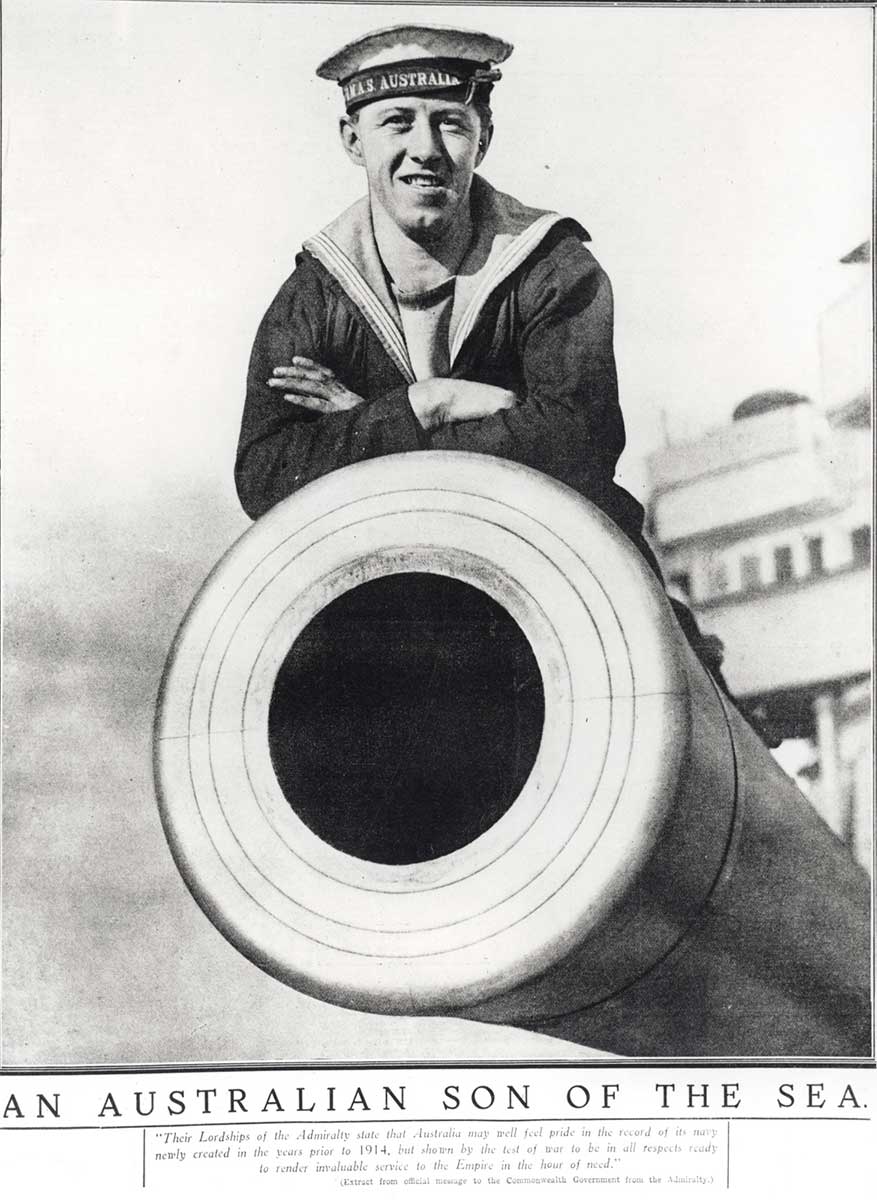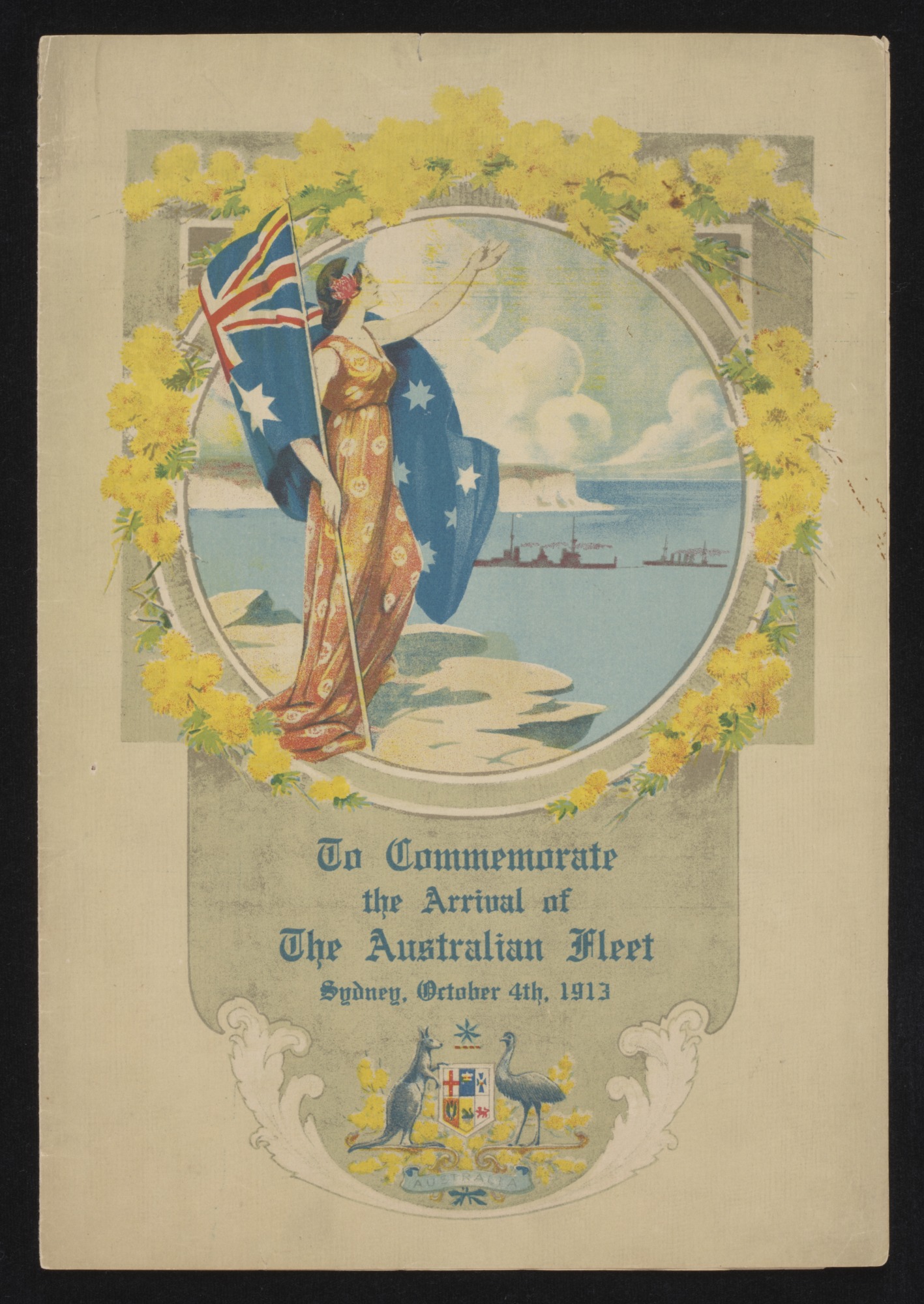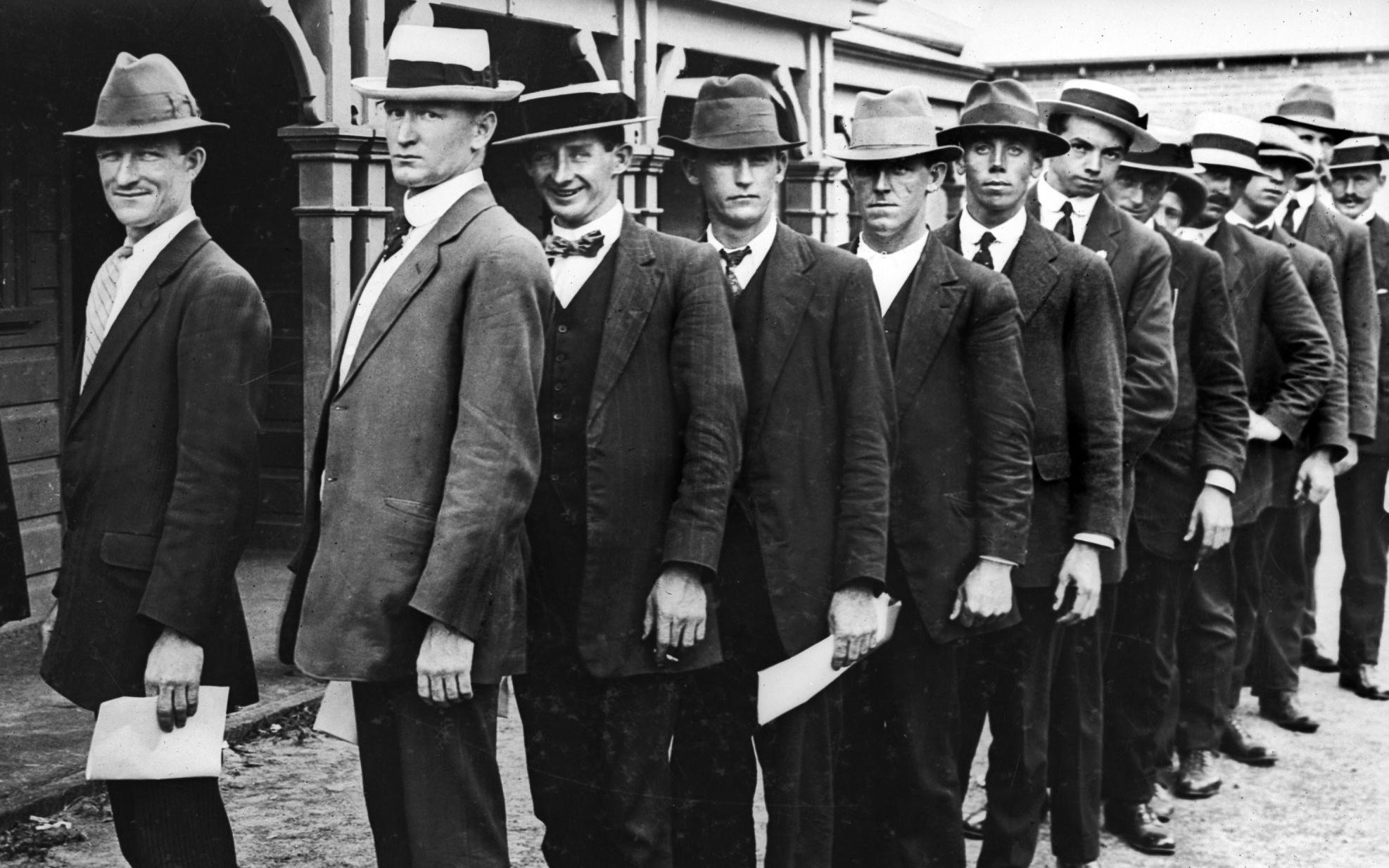Learning module:
War correspondents
War correspondents
8. Our new warships

You go to Mr Callister’s office.
‘Big things afoot, youngster. Federation was supposed to bring Australia an amazing defence force and it looks like we’re getting it! There’s a big display of warships in Sydney and I want you on it. Go and see Lucinda on your way out.’
Lucinda Clarkson is Mr Callister’s secretary. She gives you return train tickets to Sydney.
Upon arrival at Sydney you make your way to the wharf. You chat with a few sailors while taking notes. In the afternoon you get a chance to talk to a commander in the navy. This is what you find out...
On Saturday 4 October 1913 a fleet of seven brand-new grey-painted warships steamed out of the sea mist and through the Heads into Sydney Harbour.
The Royal Australian Navy’s new ‘fleet unit’ — a battlecruiser, three cruisers and three destroyers — had arrived.
The ships were a sign of the new Australian Commonwealth’s maturity as a nation as well as Australia’s uncertainty as a ‘white’ dominion in Australasia.
By far the proudest moment
The entry of the Royal Australian Navy’s fleet unit into Sydney Harbour was a proud moment in Australia’s short national history.
While the formation of a modern fleet did indicate the Commonwealth of Australia’s confidence in taking charge of its own defence, it also suggested more ambiguous currents in Australia’s conception of itself.
The ships were proudly named ‘His Majesty’s Australian Ship’ (HMAS) — a mark of the dual loyalty characteristic of the period. While the fleet unit was paid for and, in peacetime, administered by the Australian government, it was understood to come under British Admiralty control in the event of war.
The creation of a national naval force was also a sign of the uncertainty that characterised a small ‘British’ nation that felt isolated and distant from the imperial homeland.
Your task
Your boss, Mr Callister, wants to focus on the fantastic images that accompany this story.
‘Describe the source to me, so it’s like I was really there.’
Mr Callister sends a more experienced journalist, Emma Pratt, to help show you the difference between describing general and detailed features. Emma is one of the few women to rise to senior ranks in the newspaper business, having secured an opportunity at one of the more progressive papers.
Emma says, ‘When analysing sources, it is really important to fully examine the source itself, looking at all aspects of it before you start saying what you think it means.’ She is insistent on this point.
‘You have to look at it very closely first, rather than jumping to conclusions about what it means, otherwise you will miss important things in the source, or your judgement will be clouded by what you decide you think the source means beforehand. Don’t judge the source before you inspect it thoroughly!’, she continues.
The difference between describing general and detailed features can be summarised in this table:
| General features | Detailed or specific features |
|---|---|
| What is in the source overall | What is in the source overall as well as minor details |
| The most important things in the source | Everything in the source, whether or not you think it is ‘important’ |
| Using ‘vague’ words like big, small, very, good... | Using ‘specific’ words like three times bigger than..., small in comparison to..., useful for... |
Listing detailed features will usually involve more writing than just listing general features. So, if you write more, you are more likely to write about detailed features, not just overall features. She shows you this example source:

This is what she would consider ‘listing general features’:
‘This picture shows a man sitting on a giant cannon. The man is a sailor.’
This is what she says is ‘describing detailed or specific features’:
‘This is a black and white photo. The photo is dominated by a large gun. It has a very wide barrel, suggesting that very large projectiles can be shot out of it. Sitting on top of the gun barrel is a young man. He is wearing what looks like a sailor’s uniform. He has a white hat with a dark rim with writing on it. He also has on a typical sailor’s jacket. He is folding his arms and smiling. Behind him you can see in the background what looks like a very large battleship. The photo appears to be from a newspaper, as there is a caption at the bottom of it. The caption says, ‘An Australian Son of the Sea’. That probably refers to the sailor in the picture.’
Now your job is to describe detailed/specific features of this source:

Write your source analysis describing specific features. You should write at least seven sentences.
The next day you take the train back from Sydney, admiring the rugged farm scenery on the long journey. On your return you submit your report to Mr Callister. He summons you to his office.
‘Great work again, but we have no time to discuss this much further. War is imminent! The Great War between the European empires is finally here and everyone is excited! It looks like our mother country, Great Britain, needs Australia to help her. Seems like it will be the British, French and Russian Empires against the German and Austro-Hungarian Empires. I need you on this immediately!’
He says that this assignment could occupy you for the next year or so. Everyone assumes the coming war will be over soon, with a quick victory. The Australian government immediately agrees to enter the war and supply soldiers and equipment to Great Britain. Mr Callister sends you down to the recruitment offices to write a story about why people are joining the war effort. Go to 10.







